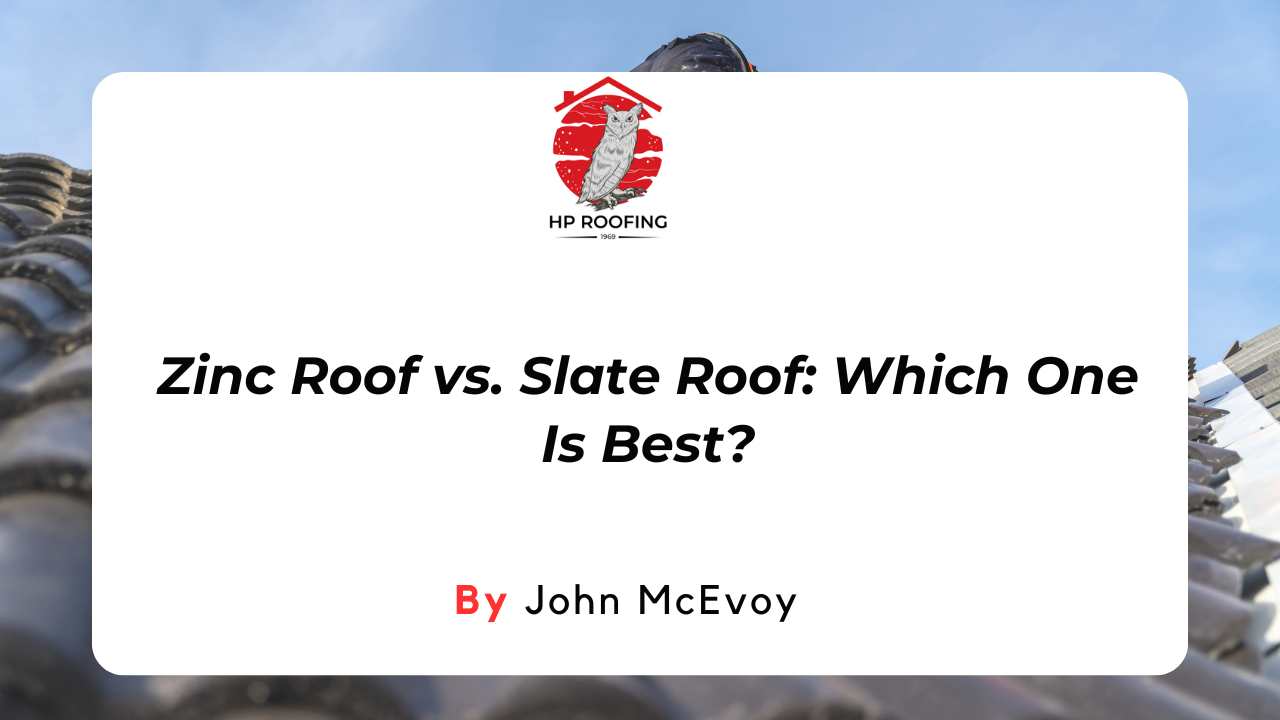Do you want to protect your roof from moss, algae, and fungus growth? Do you want to extend the lifespan of your roof and save money on repairs and maintenance? If you answered yes to these questions, then you might want to consider installing zinc roof strips on your roof.
Zinc roof strips are thin metal strips that are attached to the ridge or peak of your roof. They work by releasing zinc ions when it rains, which wash down the roof and prevent the growth of organic matter. Zinc is a natural fungicide and biocide that is safe for the environment and your health.
This blog post will show you how to install zinc roof strips on your roof, provide a step-by-step guide, and also explain the benefits and costs of using zinc roof strips.
What are the Benefits of Installing Zinc Roof Strips?
Installing zinc roof strips on your roof has several benefits, such as:
Preventing moss, algae, and fungus growth
Moss, algae, and fungus can damage your roof by causing leaks, cracks, stains, and rot. They can also reduce the aesthetic appeal of your roof and lower your property value. Zinc roof strips can prevent these problems by killing and inhibiting the growth of these organisms.
Extending the lifespan of your roof
By preventing moss, algae, and fungus growth, zinc roof strips can also extend the lifespan of your roof. Moss, algae, and fungus can shorten the lifespan of your roof by up to 50%, according to some studies. Zinc roof strips can help you avoid premature roof replacement and save money on repairs and maintenance.
Saving energy and money
Zinc roof strips can also help you save energy and money by keeping your roof cooler. Moss, algae, and fungus can absorb heat and make your roof hotter, which can increase your cooling costs and carbon footprint. Zinc roof strips can reflect heat and keep your roof cooler, which can lower your cooling costs and carbon footprint.
Being eco-friendly and safe
Zinc roof strips are eco-friendly and safe to use, unlike some other roof treatments that contain harsh chemicals or metals. Zinc is a natural element that is biodegradable and non-toxic. It does not harm plants, animals, or humans. It also does not corrode or rust, unlike copper or steel roof strips.
How Much Do Zinc Roof Strips Cost?
The cost of zinc roof strips depends on several factors, such as:
The size of your roof
The larger your roof, the more zinc roof strips you will need, and the higher the cost. The average roof size in Ireland is about 100 square metres. You will need about 10 zinc roof strips for a roof of this size, which will cost about €200 to €300, depending on the quality and brand of the zinc roof strips.
The type of your roof
The type of your roof can also affect the cost of zinc roof strips, as some roofs are easier or harder to install zinc roof strips on. For example, flat roofs, metal roofs, and slate roofs are easier to install zinc roof strips on, while tiled roofs, shingle roofs, and wood roofs are harder to install zinc roof strips on. The harder the roof, the more labour and time it will take, and the higher the cost.
The installation method
The installation method of zinc roof strips can also affect the cost, as some methods are easier or harder than others. For example, nailing zinc roof strips to the roof is easier and cheaper than glueing or screwing them. The installation method can also affect the durability and effectiveness of the zinc roof strips, as some methods are more secure and stable than others.
The labour cost
The labour cost of installing zinc roof strips can vary depending on the contractor you hire, the location you live in, and the time of the year. The average labour cost of installing zinc roof strips in Ireland is about €40 to €60 per hour.
The installation of zinc roof strips can take about 2 to 4 hours, depending on the size and type of your roof and the installation method. Therefore, the labour cost can range from €80 to €240.
How to Install Zinc Roof Strips on Your Roof: Step-by-Step Guide
Installing zinc roof strips on your roof is not a very difficult task, but it does require some skills, tools, and safety precautions. You can either do it yourself or hire a professional contractor to do it for you.
If you decide to do it yourself, here are the steps you need to follow:
Gather the materials and tools
Before you start the installation process, you will need to gather the materials and tools you will need. These include zinc roof strips, nails, screws, or glue; a hammer, drill, or tin snips or scissors; a tape measure and pencil; a ladder; a safety harness; and gloves. Make sure you have enough zinc roof strips to cover the length of your roof ridge or peak, plus some extra for overlapping and cutting.
The width of the zinc roof strips should be about 5 to 8 cm, and the thickness should be about 0.5 to 1 mm. The quality and brand of the zinc roof strips can affect their price and performance, so choose wisely.
Prepare the roof
The next step is to prepare the roof for the installation of zinc roof strips. Remove any debris, moss, algae, or dirt using a broom, hose, pressure washer, or specialised roof cleaner. Check for and address any loose or damaged shingles, tiles, or slates. Once cleaned, dry the roof completely to prevent any moisture interference during installation; a towel, blower, or natural sunlight can be effective for this.
Next, measure and mark the roof to determine where to place and attach the zinc strips. Measure the length of the roof ridge, the width of the strips, and the distance from the roof edge. Mark the attachment points and areas for cutting the strips using a tape measure and pencil. This preparation is key for the effective placement of zinc strips.
Cut the zinc roof strips
The third step is to cut the zinc roof strips to the right size and shape. You will need to use the tape measure and pencil to measure and mark the zinc roof strips according to the length of your roof ridge or peak and the places where you will attach them. Then, you will need to use the tin snips or scissors to cut the zinc roof strips along the marks. Make sure you cut them straight and smooth, without any jagged edges or burrs.
You will also need to use the tin snips or scissors to cut the corners of the zinc roof strips at a 45-degree angle. This will create a bevelled edge that will fit better on the roof and prevent water from pooling under the zinc roof strips.
Attach the zinc roof strips
The fourth step is to attach the zinc roof strips to your roof. You will need to use the ladder and safety harness to access and work on your roof safely and comfortably. Make sure you wear gloves to protect your hands from cuts and scratches. You will need to start from the bottom of the roof and work your way up to the ridge or peak.
Place the first zinc roof strip about 5 to 10 cm below the edge of the roof, parallel to the ridge or peak. Make sure the bevelled edge is facing down and the flat edge is facing up. Then, you will need to use the hammer, drill, or caulking gun to apply the nails, screws, or glue to the zinc roof strip and the roof.
Make sure you space them evenly and securely, about 20 to 30 cm apart. Do not over-tighten or over-apply them, as this can damage the zinc roof strip or the roof. Repeat the process for the rest of the zinc roof strips, overlapping them by about 2 to 3 cm. Make sure you align them properly and cover the entire length of the roof ridge or peak.
Check and test the zinc roof strips
The fifth and final step is to check and test the zinc roof strips for any errors or issues. You will need to inspect the zinc roof strips for any gaps, cracks, leaks, or loose parts. If you find any, fix them with more nails, screws, or glue, or replace them with new zinc roof strips. Then, you will need to test the zinc roof strips for their effectiveness by spraying water on them and observing how they react.
If they release zinc ions and create a milky-white runoff, then they are working properly. If they do not, then they may be defective or coated with something that prevents them from working properly. In that case, you may need to clean them with a mild detergent or vinegar or replace them with new zinc roof strips.
Conclusion
To sum up, installing zinc roof strips is a practical and effective way to shield your roof from moss, algae, and fungus. These strips, placed on the peak of the roof, release zinc ions in the rain, which wash down the roof to prevent organic growth. This process is not only environmentally friendly but also extends your roof's lifespan and saves on maintenance costs. The installation involves preparing the roof, cutting and attaching the strips properly, and ensuring they are secure and aligned.
Regular checks and maintenance will ensure their continued effectiveness. For professional installation and advice, HP Roofing offers expert services to ensure your roof benefits from the protective qualities of zinc strips, enhancing its durability and appearance. Contact HP Roofing for a comprehensive solution to maintaining a healthy, long-lasting roof.
















